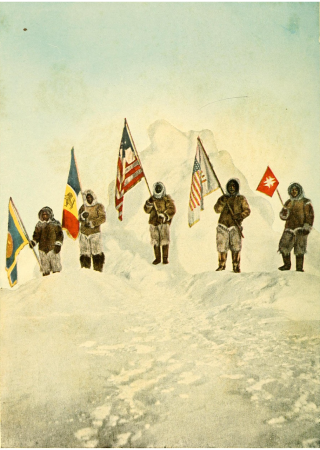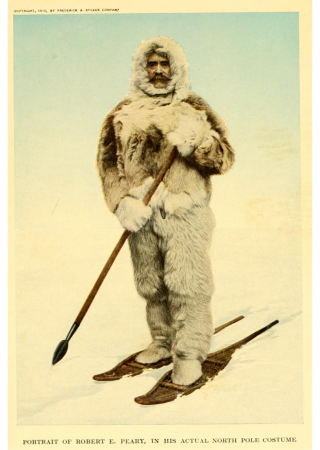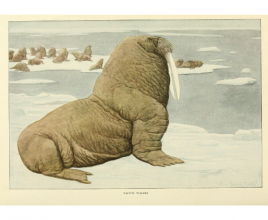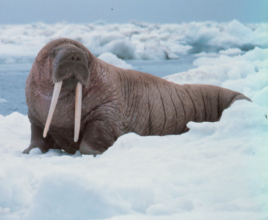Conquering of North pole
- ... the North Pole is not on solid land?
- ... Peary's expedition proved that humans can cover 1,500 kilometers over the drifting ice of the north polar ocean to reach the point on the northern hemisphere, which is the furthest from the equator?
- ... a dispute over who reached the North Pole later erupted later when Dr. Frederick Albert Cook, claimed that he had reached the North Pole a year earlier? The Royal Geographic Society in Copenhagen finally accepted that Peary was first.
- ... on the last leg of the journey, Peary took with him a Negro and an Eskimo, partly because he wanted to be the only white man who had reached the pole?
- ... a peninsula in northern Greenland is named Peary Land, and a passage in the north Canadian Arctic is named the Peary Channel?
- ... Eskimos call the Earth's northern axis point Tibi šu, meaning "Large nail"?
- ... Civil Engineer Robert Edwin Peary was born on May 6th, 1856 in Cresson, Pennsylvania, and died on February 20th, 1920 in Washington, and is buried in Arlington Cemetery?
- The expedition started out in July 8th, 1908.
- The American expedition comprised 7 researchers, 19 Eskimo guides, 28 sleds and 140 dogs.
- The captain of the steamship Roosevelt, which carried the expedition to Cape Sheridan, was Captain R. A. Bartlett.
- The group which made the last leg of the journey to the pole (224 kilometres) were Peary, Negro assistant Matthew Alexander Henson (1866-1966) who accompanied Peary on all his trips from 1887 onwards, and four Eskimos: Ooqueah, Eginghwah, Seegloo and Ootah.
- They reached the North Pole on April 6th, 1909 in the late afternoon.
- Peary was 54 years old at the time.
The steamship Roosevelt with Peary's expedition party sailed from New York on July 8th, 1908 with the goal of reaching the North Pole. After a stop in the Canadian port of Sydney, Nova Scotia, the Roosevelt arrived in Etah, Greenland on August 8th and continued on to Cape Sheridan on Ellesmere Island, where they spent the winter. From a base station on Cape Columbia (north shore of Ellesmere Island) the expedition set out in February, 1909. The advance teams set out led by Captain R. A. Bartlett; and on February 22nd, Peary followed on accompanied by two Eskimos. The polar team at that time comprised 7 researchers and 19 Eskimo guides on 28 sled pulled by 140 dogs. At the end of March, the support teams began returning, led by Ross G. Marvin (who died on the return trip, April 10th, 1909) and Captain Bartlett, who got as close as 88° northern latitude. On April 2nd, the remaining distance to the pole was only 224 kilometres. Peary and Matthew Henson, together with Eskimos Ooqueah, Eginghwah, Seegloo and Ootah, using five sleds and 40 dogs, with superhuman effort, marched for five days. On April 6th, 1909 at 10am, Peary and his team reached 89°57'. After a short rest, they set off again and late that afternoon reached the northernmost point on the earth.





